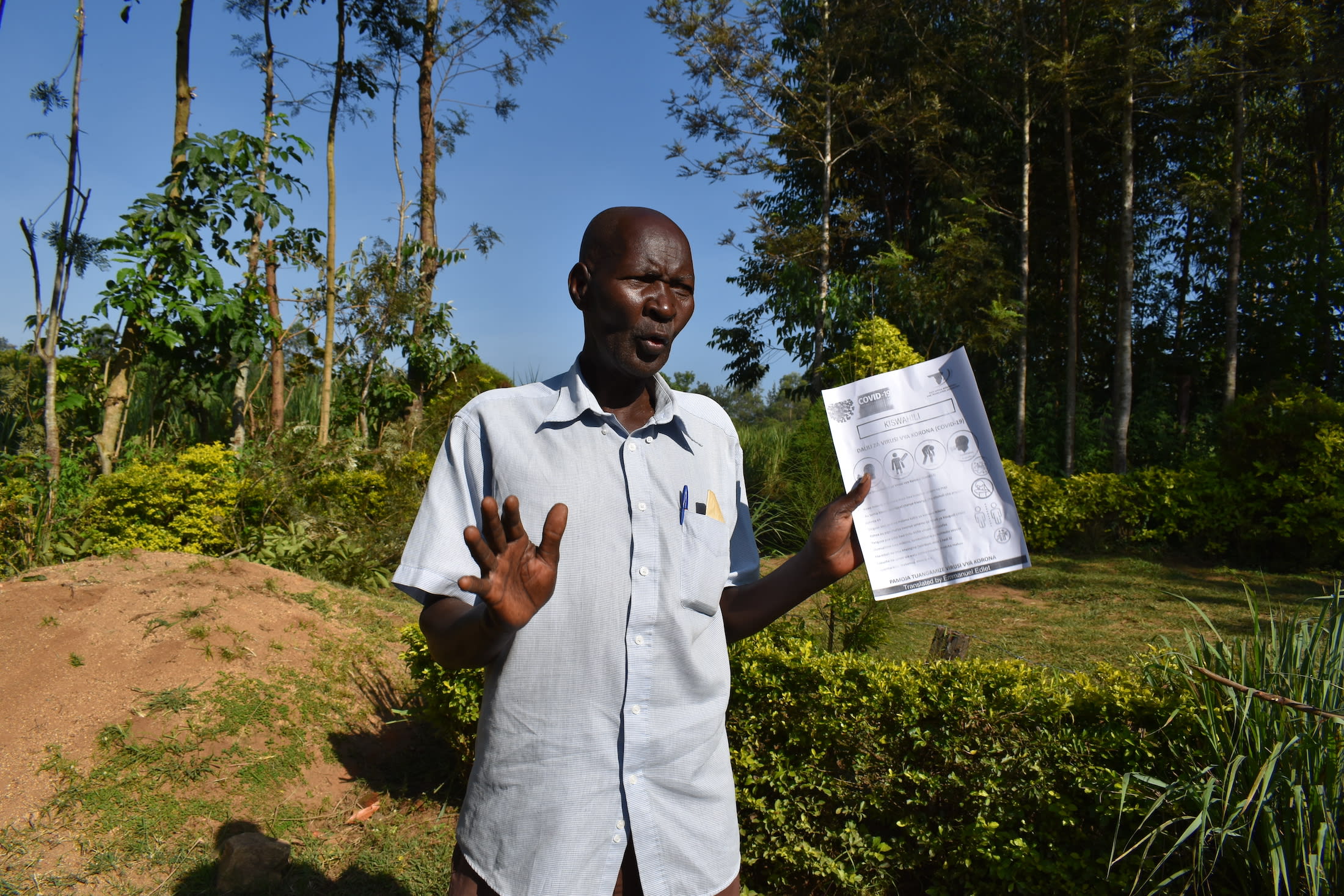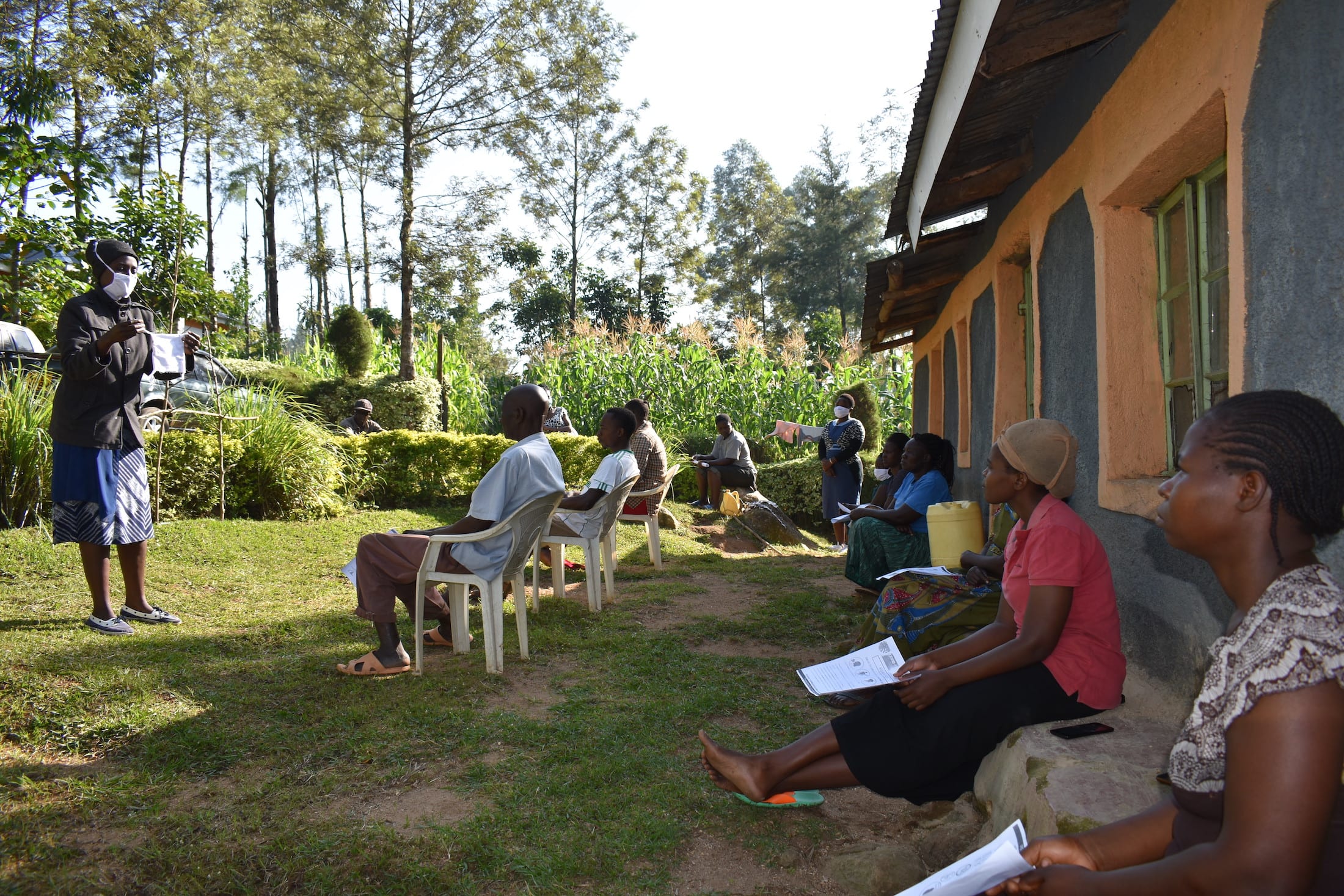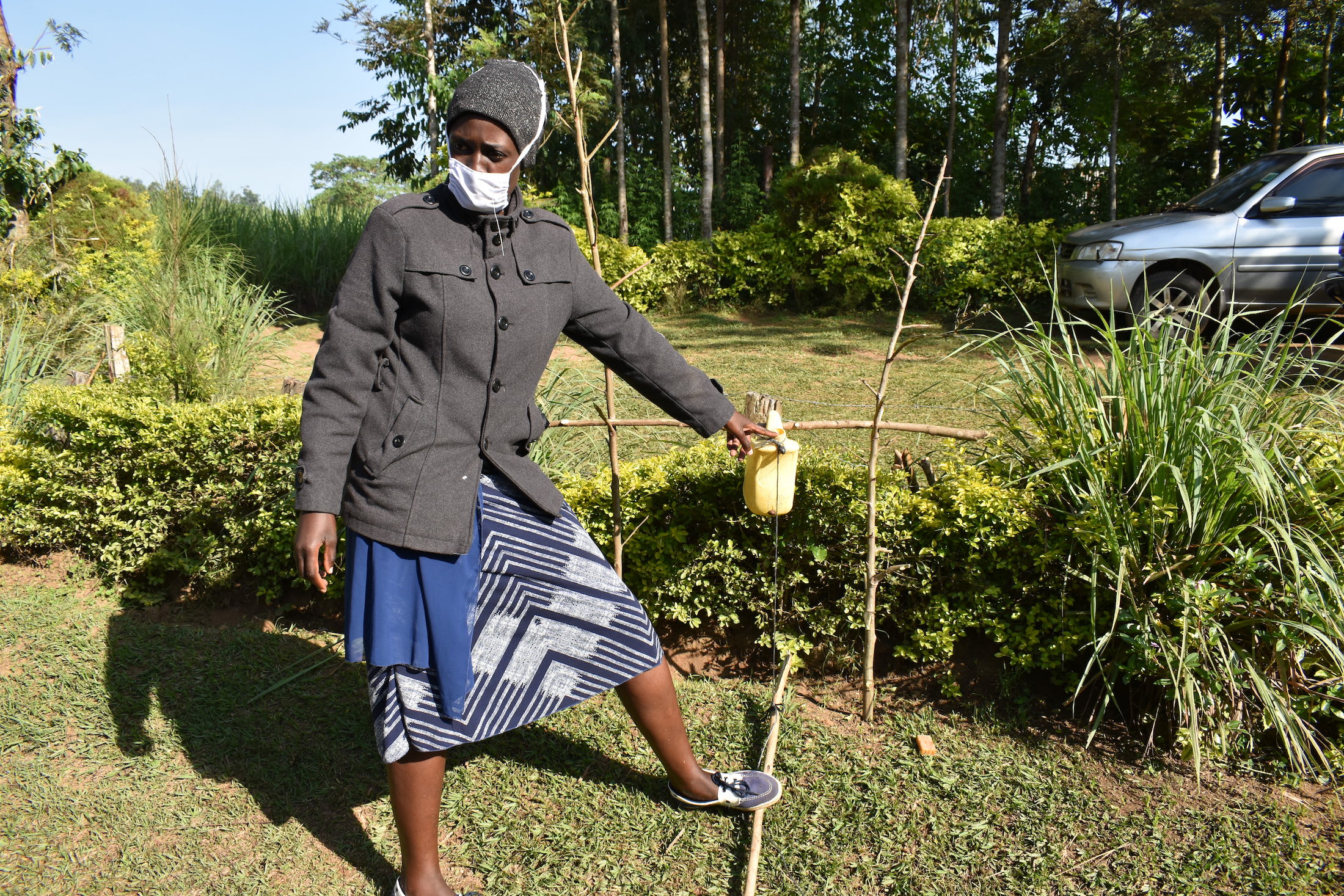The people of Esembe Village are mainly farmers, although they do it on a small scale. Those who have the largest farms are mostly sugarcane farmers. Their crops are easily sold to local sugar factories.
Each day begins early at 6am in a rush to get things done before the afternoon heat. Women are usually involved in household-based activities such as cleaning and taking care of children.
But they also do a ton of work on the farm, too! They are often the people seen on the farms during the day; few men there.
A majority of the men head into town in search of other casual jobs (mainly construction work). The day usually ends around 7pm when the darkness begins setting in and everyone prefers being home. Dinner is served early, and the children do a few school assignments by candlelight. Everyone is in bed around 9pm.
Water Situation
Chera Spring serves several families living around Esembe. It is an open water source that is subjected to all kinds of contamination. Community members prefer not to use the water here and fear drinking it. They keep the largest possible open containers they can afford outside their homes to collect rain. But when it doesn't rain, there is no other option but to scoop water from Chera Spring.
If a family can't afford a large container for collecting rainwater, they solely rely on spring water. Many can't afford firewood for boiling the water to make it safer for drinking, either.
36-year-old Gladys Chera told us, "Since I was a small child, we grew up understanding that some of the diseases we now know as cholera and typhoid would only affect people as a result of witchcraft. At the moment we have an unclear understanding of the causes... our water is not clean but we have no alternatives so we just use what is there. The children get so sick, especially during rainy seasons. We therefore need some help!"
Sanitation Situation
The latrines here are either thatched with mud, made of old iron sheets, or, if a family is well-off, bricks. The floors are either made of mud or wooden slats lain over the pit. Not all households even have a pit latrine. And if they have one, children run around and relieve themselves as they please.
There are no hand-washing stations, but we noticed that people have put in an effort; each household has at least one type of sanitation structure whether it be a pit latrine, dish rack, or clothesline.
Here's what we're going to do about it
Hygiene and Sanitation Training
Community members will attend hygiene and sanitation training for at least three days. This training will ensure participants are no longer ignorant about healthy practices and their importance. The facilitator plans to use PHAST (Participatory Hygiene and Sanitation Transformation), CLTS (Community-Led Total Sanitation), ABCD (Asset-Based Community Development), group discussions, handouts, and demonstrations at the spring. One of the most important topics we plan to cover is the handling, storage, and treatment of water. Having a clean water source will be extremely helpful, but it is useless if water gets contaminated by the time it’s consumed. Hand-washing will also be a big topic. Since open defecation was encountered here, this is at the top of our list of things to address. Waste always needs to be disposed of properly, or else it will be spread by flies or rainwater.
Training will also result in the formation of a committee that will oversee operations and maintenance at the spring. They will enforce proper behavior around the spring and delegate tasks that will help preserve the site, such as building a fence and digging proper drainage.
Sanitation Platforms
On the final day of training, participants will select five families that should benefit from new latrine floors.
Training will also inform the community and selected families on what they need to contribute to make this project a success. They must mobilize locally available materials, such as bricks, clean sand, hardcore, and ballast. The five families must prepare by sinking a pit for the sanitation platforms to be placed over. All community members must work together to make sure that accommodations and food are always provided for the work teams.
Spring Protection
Protecting the spring will ensure that the water is safe, adequate and secure. Construction will keep surface runoff and other contaminants out of the water.
Fetching water is predominantly a female role, done by both women and young girls. Protecting the spring and offering training and support will therefore help empower female community members by giving them more time and efforts to engage and invest in income-generating activities.

 Protected Spring
Protected Spring
 Rehabilitation Project
Rehabilitation Project












































